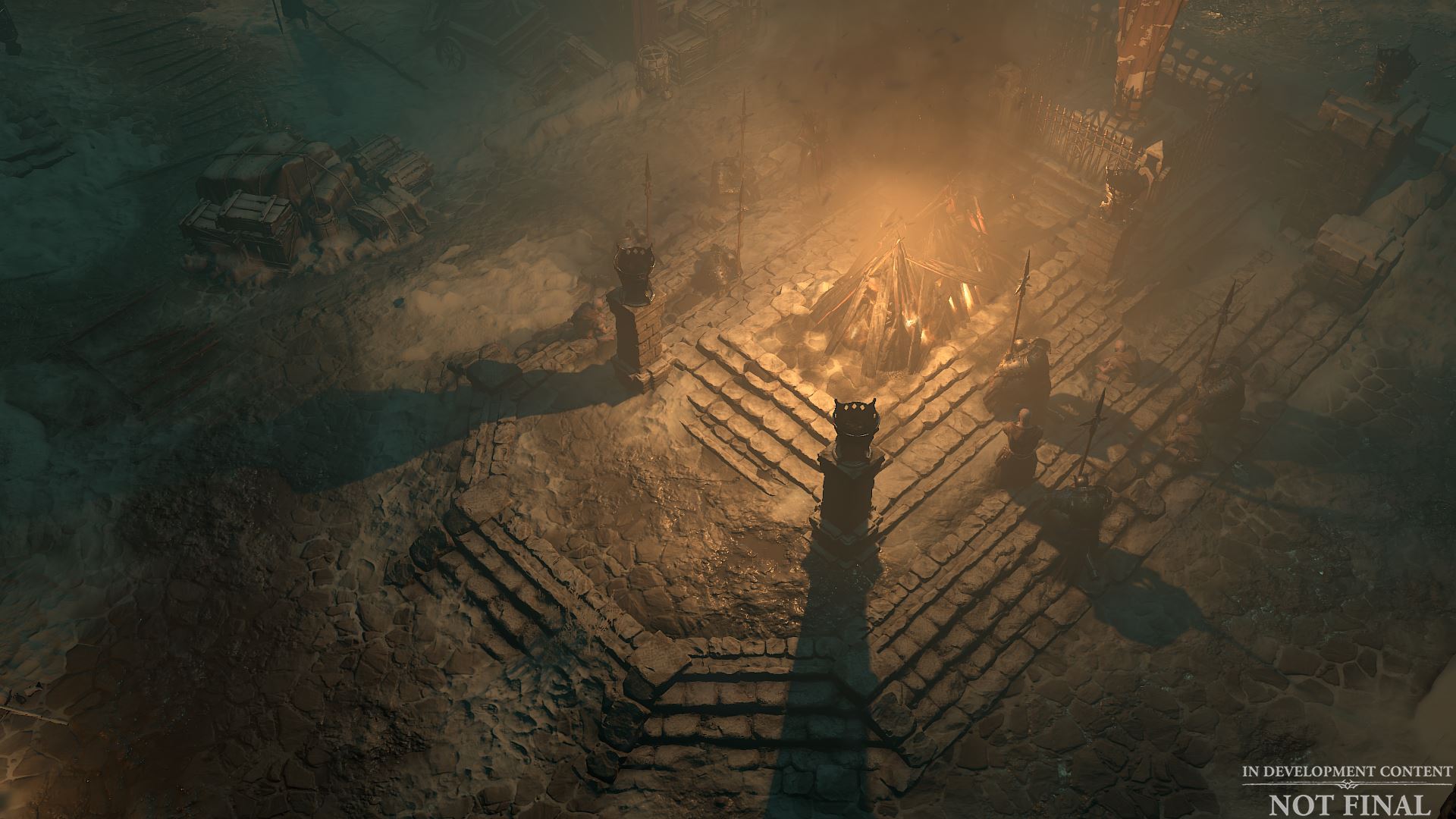Diablo 4 devs promise “disruptions” that’ll break the RPG mould
Heaven sent

The kill-loot-repeat formula of the Diablo series is long in the tooth, with the first entry in the series having released back in 1997. Since then, the series has become a definitive part of the action RPG genre. Any addition to the franchise carries with it the hopes and expectations of generations of fans.
Diablo 4 Art Director John Mueller and Associate Game Director Joe Piepiora certainly seemed aware of this when I sat down with them. After a brief conversation with the pair, I came away with high hopes for Blizzard’s latest offering, adamant that it would earn a place on our list of the best RPGs.
Piepiora and the team have committed to offering a Diablo experience that incorporates modern game design maxims while staying true to the series’ roots. In Diablo 4 the player “needs to find meaningful rewards… tangible things.” He continues: “one general rule of game design is that the player does not do what’s fun; the player does what is efficient. It’s the game designer’s job to make sure what’s efficient is fun.”
From the outset, Diablo 4 is designed to expand outward like a fractal
A great deal of this falls on character advancement and customization. For Piepiora and co, it’s about fostering a sense of “organic growth” where “simple decisions” made early on ripple outwards as players begin to “get the context”. This is followed by “more complicated decisions later” as they progress their characters further.
From the outset, Diablo 4 is designed to expand outward like a fractal, starting with simple, satisfying decision points, but ending in complex-choice crescendos. The idea is not to overwhelm beginners with a “vast morass of options”, but to gently ease them into the game’s systems, offering a character that grows with them as they go from neophyte to veteran demon-slayer.
No rest for the wicked

However, Piepiora and co. are keen to avoid a predictable “linear” structure, instead looking to create a user experience that provides a “free-roaming structure of gameplay” which “breaks up” what might be monotonous gameplay loops. Though Diablo 4 is, at its core, a game about “going out and collecting loot”, both the game’s environment and combat are designed to present the player with constant intrigue in a style reminiscent of modern open-world titles like Horizon: Forbidden West or Star Wars Jedi: Survivor.
Art Director John Meuller explains what this would mean in practice.”[It’s about] the little secrets and lore books, and other little things that you pick up along the way. If you go into that corner, you’re like ‘I think there’s something up there’, and you go up there. [You might find] one area where there’s a door without a key and you’re like: ‘What’s this?’ Sure enough, there’s a side quest that can get you in there.”
Sign up for breaking news, reviews, opinion, top tech deals, and more.
The overworld of Sanctuary is basically a series of complicated disruptions
Joe Piepiora
Piepiora elaborates further: “the overworld of Sanctuary is basically a series of complicated disruptions that the players head out into.” This is how the developers aim to “make Diablo special” by taking the core appeal of the ARPG gameplay loop and placing it in the context of a modern, “free roaming” experience.
Brave new world

It’s clear, then, that the developers have open-world ambitions for Diablo 4, but, in contrast to the underwhelming expanses found in the likes of Assassin’s Creed: Valhalla, Piepiora, Meuller and their colleagues want to make an environment that’s teeming with life, intrigue, and juicy decision points.
“You’re wandering about”, says Piepiora. “We want you to move from place to place. When we think of the player character in Diablo 4, we call them The Wanderer… think of them almost like a roaming cowboy, you’re gonna come into town, you’re gonna solve some problems and you’re going to make some connections, but you’re going to move on. You’re not tied down to any place.” Piepiora goes on to say that: “We really want the player to have their own journey and make their own choices while moving from area to area within the regions of Sanctuary. We want them to find interesting discoveries along the way and [to] create their own [unique] player story of that journey as they go.”
If the developers pull this off, it’ll have a transformative effect on the Diablo experience
With their commitment to creating a “meaningful” open world experience, Diablo 4’s developers have set themselves a lofty goal. However, I found myself leaving the interview with renewed confidence in the craft of these industry veterans.
Diablo has always presented players with complex yet accessible systems of customization which gave players a real sense of ownership over their characters. With Diablo 4, Blizzard seeks to widen this sense of ownership to encompass not only the environment itself, but also the player’s bespoke journey through that environment.
If the developers pull this off, it’ll have a transformative effect on the Diablo experience, doing wonders for the sense of immersion and agency experienced by the player. Of course, the proof will be in the playing, but this commitment to “offering something broader… than with previous titles” gives me hope that Diablo 4 will be one for the history books.

An editor and freelance journalist, Cat Bussell has been writing about video games for more than four years and, frankly, she’s developed a taste for it. As seen on TechRadar, Technopedia, The Gamer, Wargamer, and SUPERJUMP, Cat’s reviews, features, and guides are lovingly curated for your reading pleasure.
A Cambridge graduate, recovering bartender, and Cloud Strife enjoyer, Cat’s foremost mission is to bring you the best coverage she can, whether that’s through helpful guides, even-handed reviews, or thought-provoking features. She’s interviewed indie darlings, triple-A greats, and legendary voice actors, all to help you get closer to the action. When she’s not writing, Cat can be found sticking her neck into a fresh RPG or running yet another Dungeons & Dragons game.